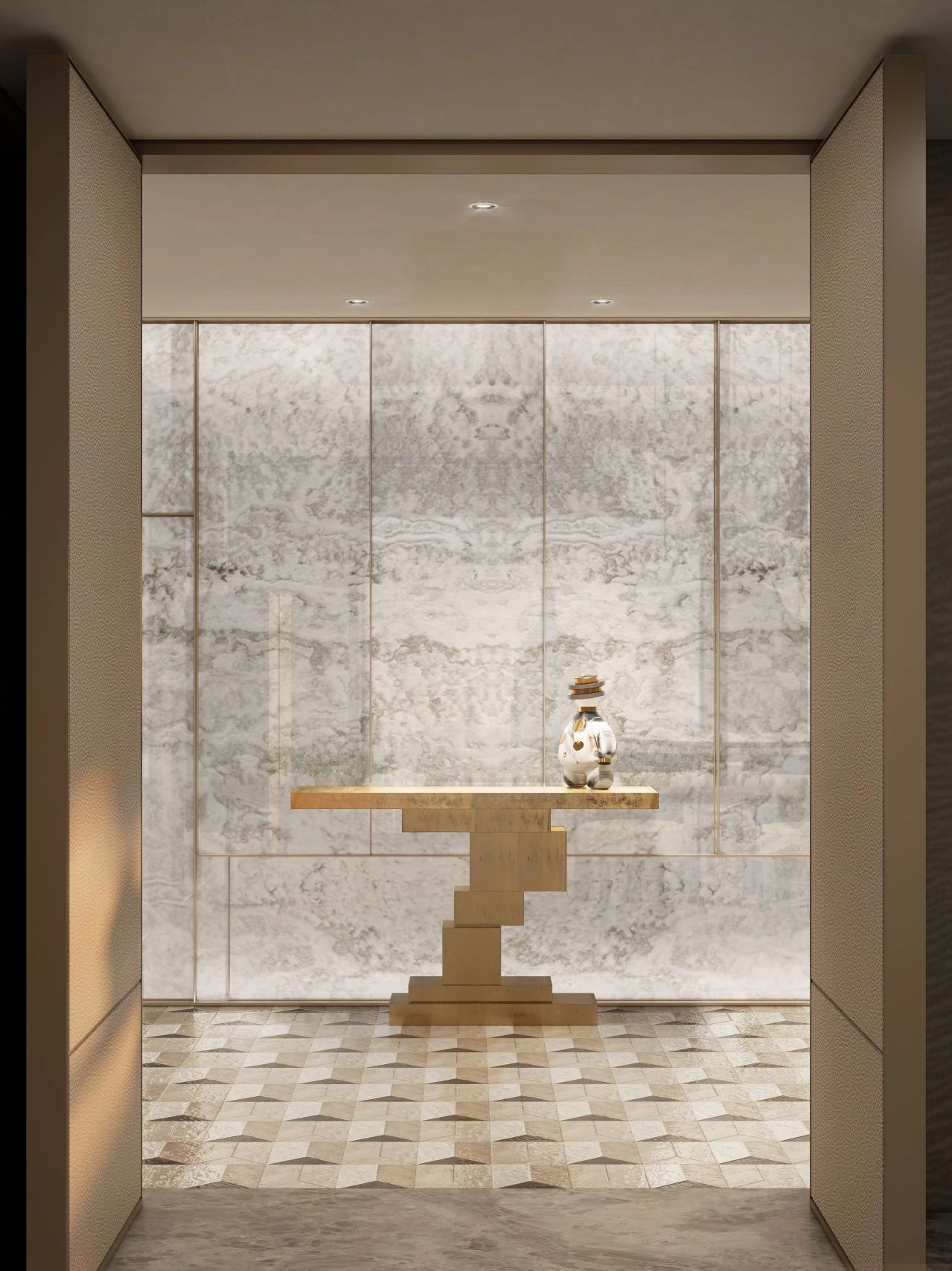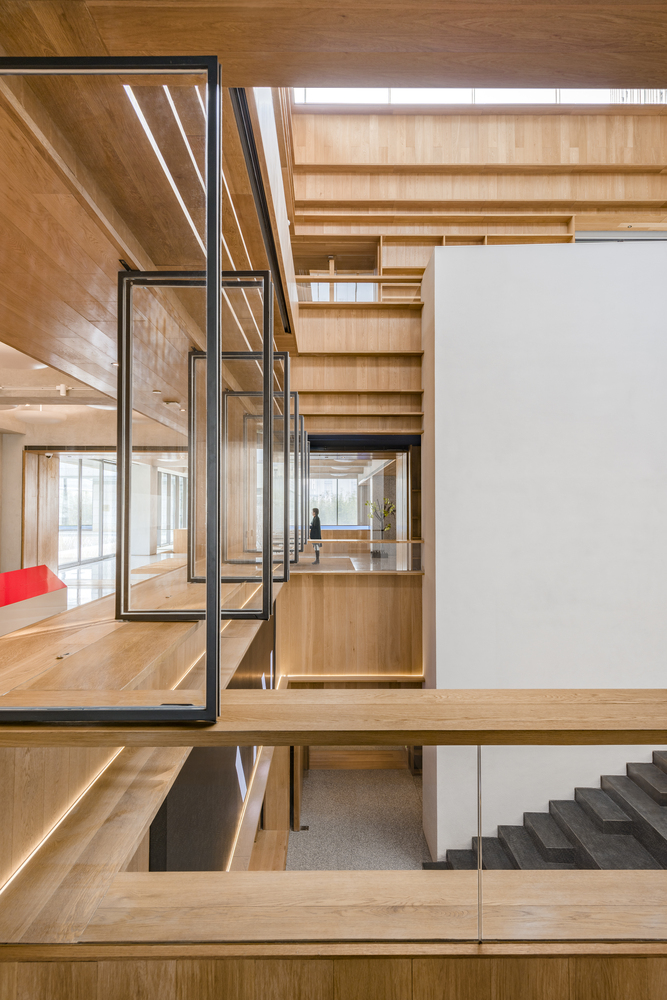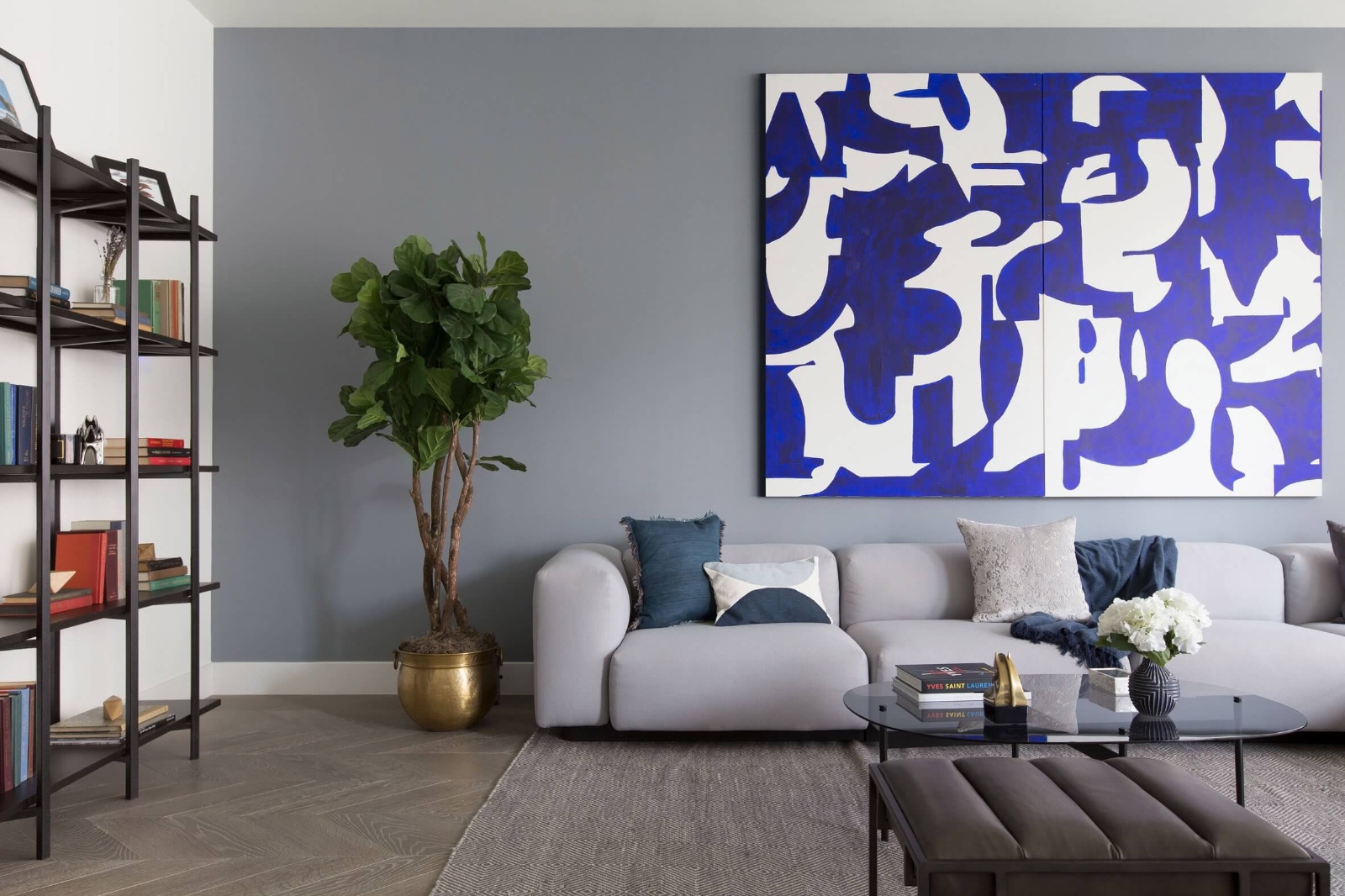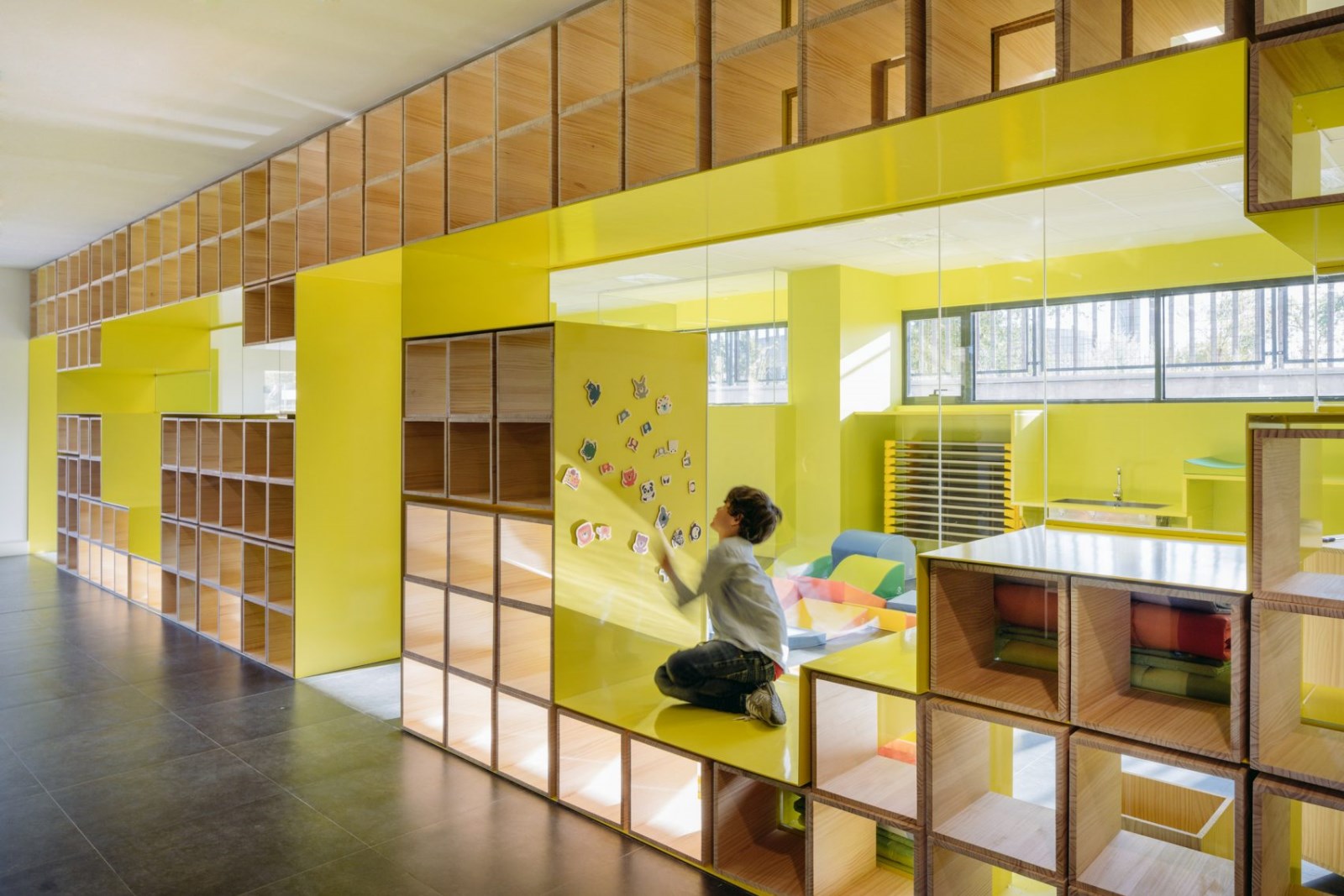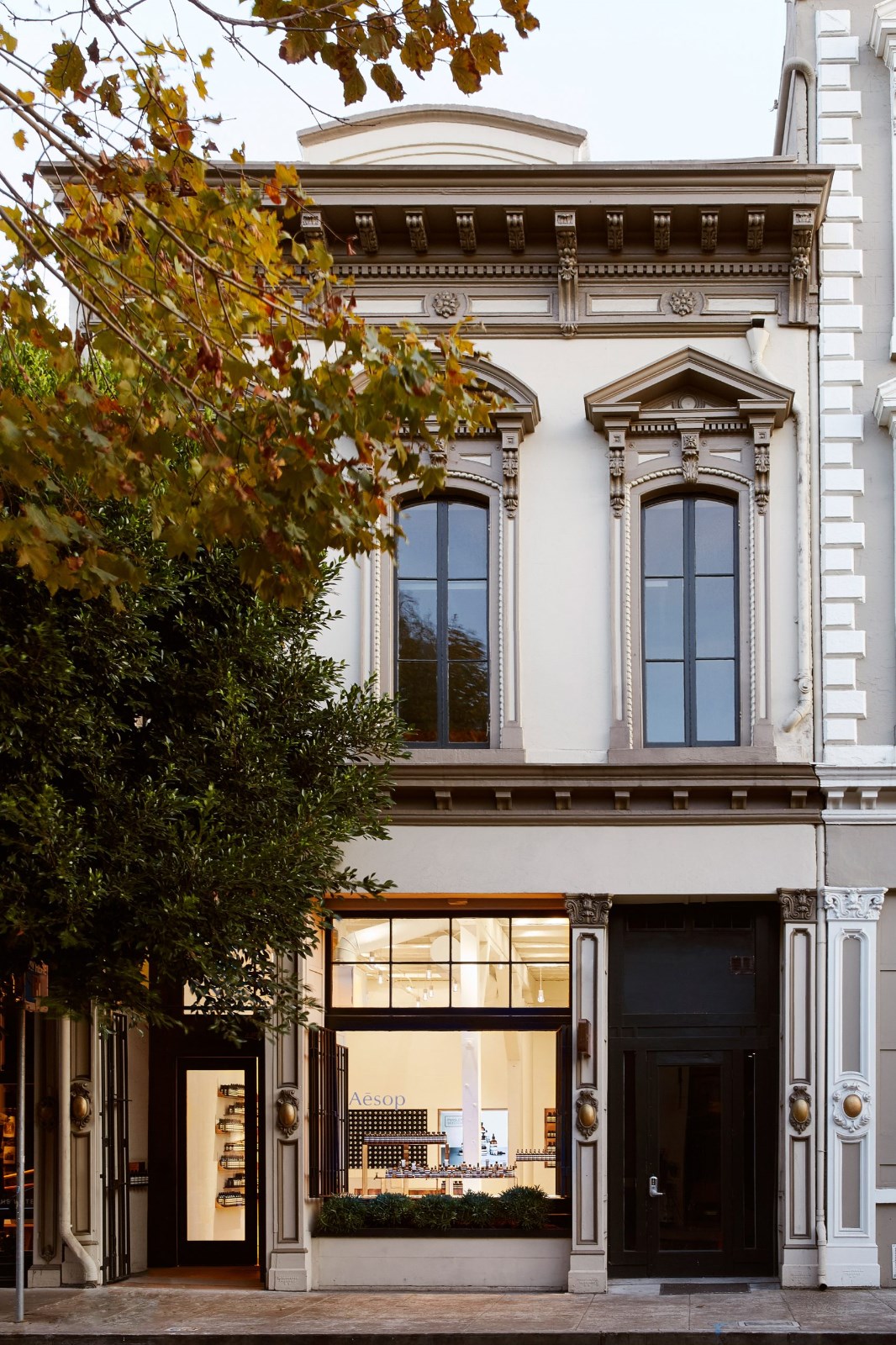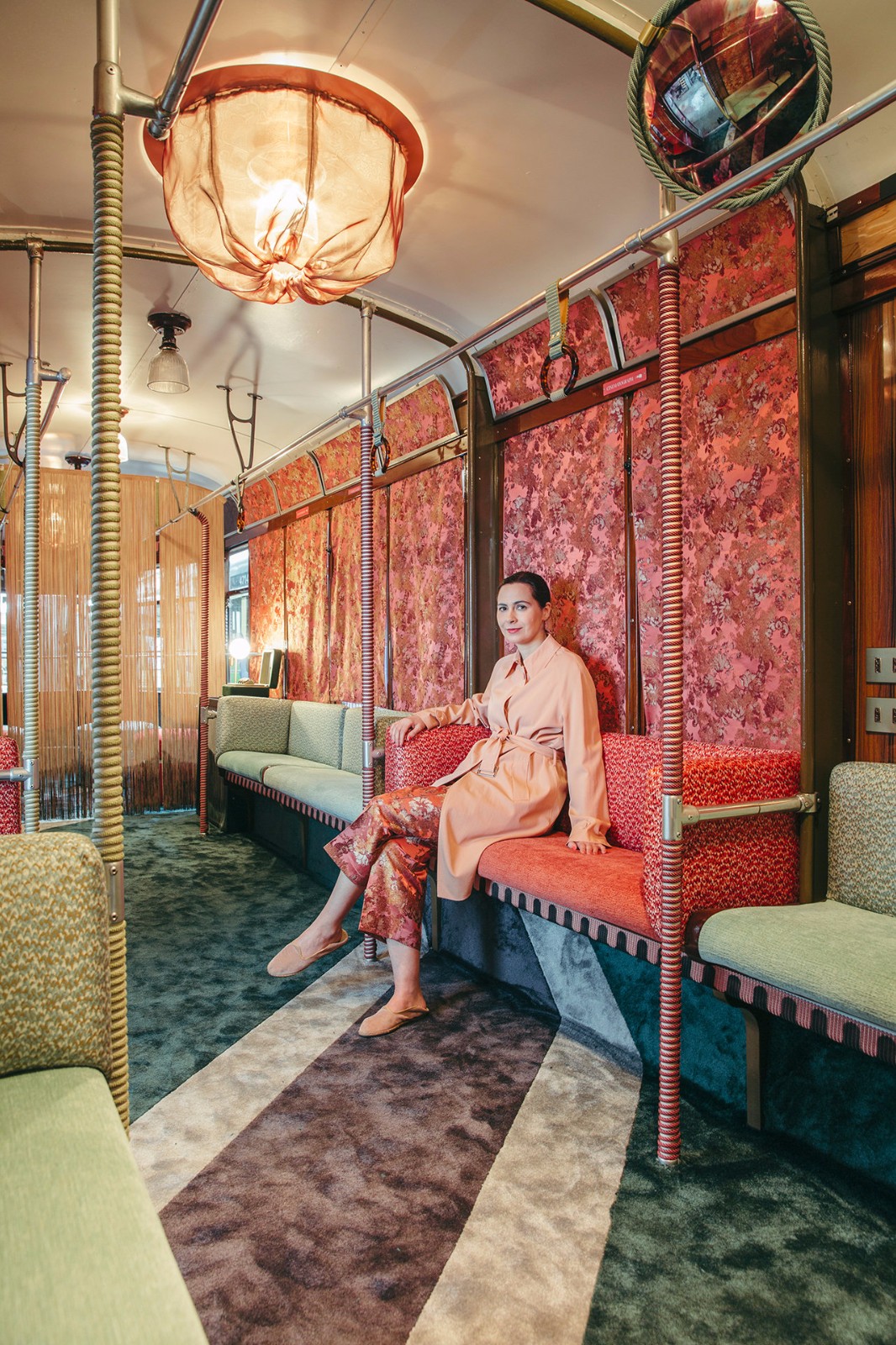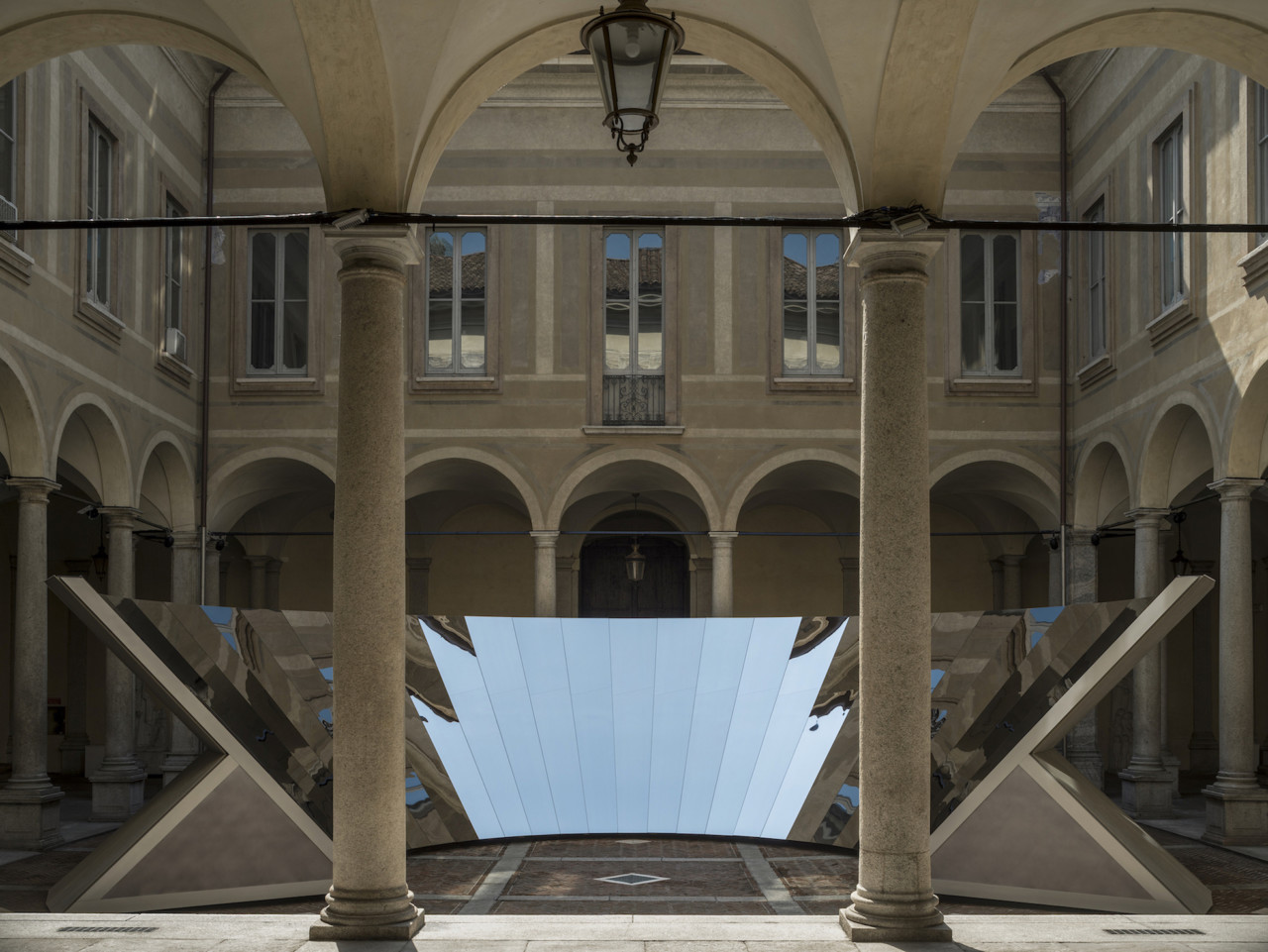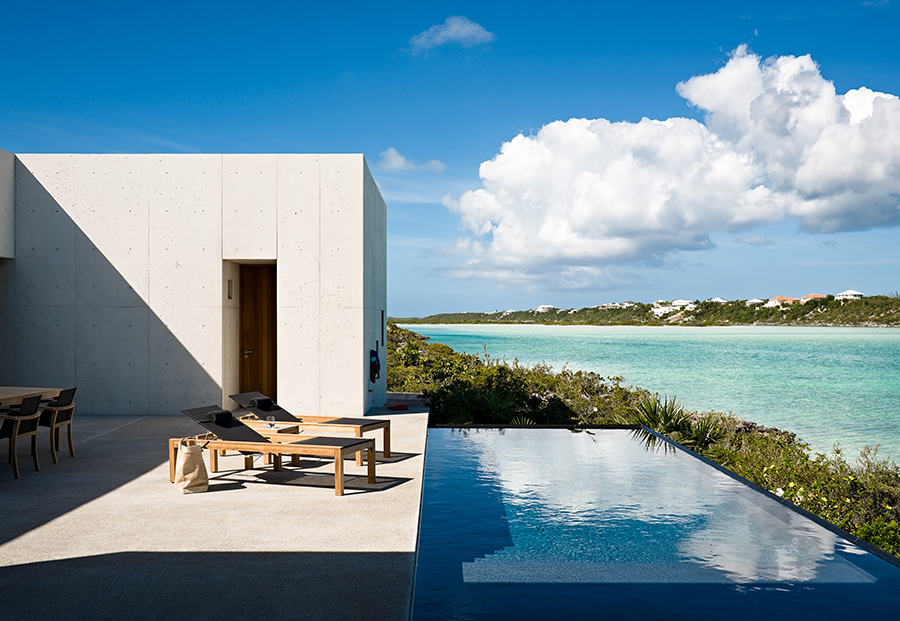deFlat NL Architects + XVW architectuur
2017-03-02 13:00
© Stijn Poelstra
(Stijn Poelstra)


架构师提供的文本描述。克莱堡是荷兰最大的公寓楼之一:有500套公寓,400米长,101层高。
Text description provided by the architects. Kleiburg is one of the biggest apartment buildings in the Netherlands: a bend slab with 500 apartments, 400 meter long, 10 + 1 stories high.


Kleiburg位于Bijlmermeer,这是CIAM启发的阿姆斯特丹住宅扩建项目,由城市规划部的SiegfriedNassuth于60年代设计。de Bijlmer是作为一个绿色,轻型和宽敞的替代方案-在当时-崩溃的内城。
Kleiburg is located in the Bijlmermeer, a CIAM inspired residential expansion of Amsterdam designed in the sixties by Siegfried Nassuth of the city planning department. De Bijlmer was intended as a green, light and spacious alternative for the -at that time- disintegrating inner city.
© Marcel van der Burg
马塞尔·范德伯格


Bijlmer被设计成一个单一的项目。一种基于六角形网格的板的组合。试图创建一个垂直的花园城市。
The Bijlmer was designed as a single project. A composition of slabs based on a hexagonal grid. An attempt to create a vertical garden city.
© Marcel van der Burg
马塞尔·范德伯格


交通方式根本上是分开的:高架道路上的汽车、自行车和地面上的行人。他们将不再共享相同的空间。(鼓掌)
Traffic modalities were radically separated; cars on elevated roads and bicycles and pedestrians on ground level. They would no longer share the same space.
© Stijn Poelstra
(Stijn Poelstra)


目前,该地区约有150多个民族的10万人。Bijlmermeer有一个非常乐观的开端。但不久,对这个激进住宅区的热情就被未知的恐惧所笼罩。由于极度节约的执行、不好的宣传、缺乏理解、维护不善以及一种新的住宅梦想类型-郊区住宅-的突然出现,Bijlmer变成了一个慢慢瓦解的平行世界。
Now the area houses about 100,000 people of over 150 nationalities. The Bijlmermeer had a very optimistic start. But soon the enthusiasm for this radical residential area was overshadowed by fear-for-the-unknown. Fed by heavily economized execution, bad publicity, lack of understanding, poor maintenance and the sudden emergence of a new residential dream type -the suburban home- the Bijlmer turned into a slowly disintegrating parallel universe.
© Marcel van der Burg
马塞尔·范德伯格


重建行动于九十年代中期开始。典型的蜂窝板被大多数郊区的物质所取代,被“常态”所取代。然而,它被决定保持最具象征意义的区域不变-它的两侧是令人惊叹的、永远是未来派的高架地铁线路。所谓的Bijlmer博物馆(Bijlmer Museum)诞生了,它是Bijlmer信徒的一个紧凑的避难所。克莱堡是剩下的乐队的基石。
A renewal operation started in the mid nineties. The characteristic honeycomb slabs were replaced by mostly suburban substance, by ‘normality’. However it was decided to keep the most emblematic area intact -flanking the stunning, for-ever-futuristic elevated subway line. The so-called Bijlmer Museum came into being; a compact refuge for Bijlmer Believers. Kleiburg is the cornerstone of the remaining ensemble.
© Stijn Poelstra
(Stijn Poelstra)


克莱堡是该地区最后一座仍处于原状的建筑;从某种意义上说,它是“最后一个站在对现代主义的战争中的人”。
Kleiburg is the last building in the area still in its original state; in a way it is the “last man standing in the war on modernism”.
© Marcel van der Burg
马塞尔·范德伯格


然而,Rochdale住房公司计划将其拆除。他们计算出一次彻底的翻修将花费大约7000万欧元.
Housing Corporation Rochdale, however, had plans to demolish it. They calculated that a thorough renovation would cost about 70 million Euro...
但是用推土机推倒建筑师FOP Ottenhof的杰作会导致宏伟的城市构成的崩溃。
But bulldozing the masterpiece by architect Fop Ottenhof would lead to a collapse of the magnificent urban composition.
© Marcel van der Burg
马塞尔·范德伯格


考虑到“信徒”的强烈抵制和希望避免拆迁的地方政府的压力,罗什代尔发起了一场拯救这座建筑的运动:克莱堡出价一欧元,试图推动其他经济上可行的计划。
In anticipation to the fierce resistance by ‘believers’ and pressure by the local government, that hoped to avert demolition, Rochdale launched a campaign to rescue the building: Kleiburg was offered for ONE EURO in an attempt to catalyze alternative, economically viable plans.
50多个缔约方提出了一系列的想法,从学生或老人住房到WON/WERK单元,或无家可归者之家。
Over 50 parties responded with a range of ideas from student or elderly housing to woon/werk-units, or homes for the homeless.
© Stijn Poelstra
(Stijn Poelstra)


选出了四个小组,以进一步发展他们的想法。最终,由KondorWessels Vastgoed、Hendriks CPO、Vireo Vastgoed和HollandsLicht组成的Consortium de Plat被选中,他们的建议是将Kleiburg改造成一个K电平公寓。“克鲁森”的意思是你自己去做。
Four teams were selected to further develop their ideas. Ultimately Consortium De FLAT consisting of KondorWessels Vastgoed, Hendriks CPO, Vireo Vastgoed and Hollands Licht, was chosen with their proposal to turn Kleiburg into a Klusflat. ‘Klussen’ translates as to do it yourself.
© Stijn Poelstra
(Stijn Poelstra)


他们的想法是翻修主建筑-电梯、画廊、设施-但却让公寓没有完工,没有家具:没有厨房,没有淋浴,没有暖气,没有房间。这将尽量减少最初的投资,因此在荷兰创造了一种新的住房商业模式。
The idea was to renovate the main structure -elevators, galleries, installations- but to leave the apartments unfinished and unfurnished: no kitchen, no shower, no heating, no rooms. This would minimize the initial investments and as such created a new business model for housing in the Netherlands.
他们的目标是开辟新的生活方式,通过合并两个单位(甚至更多)来提供新的类型!通过垂直和水平的连接,形成一个整体。(鼓掌)
The ambition was to open up new ways to live, to offer new typologies by combining two flats (or even more!) into one, by making vertical and horizontal connections.
Diagram Section
图段


未来的居民可以极低的价格购买贝壳,然后完全按照自己的意愿进行装修:DIY。拥有一个理想的家突然就来到了…(鼓掌)
The future residents could buy the shell for an extremely low price and then renovate it entirely according to their own wishes: DIY. Owning an ideal home suddenly came within reach…
© Marcel van der Burg
马塞尔·范德伯格


许多人认为重复是邪恶的。在Bijlmer,大多数装修住宅的尝试都集中在区分,目的大概是要摆脱这种统一,使建筑“人性化”。
By many, repetition was perceived as evil. Most attempts to renovate residential slabs in the Bijlmer had focused on differentiation, the objective, presumably, to get rid of the uniformity, to ‘humanize’ the architecture.


但经过20年的个人化、碎片化、原子化,真正加强团结似乎是一个很有吸引力的主意:改造整体!
But after two decades of individualization, fragmentation, atomization it seemed an attractive idea to actually strengthen unity: Revamp the Whole!
现在是拥抱已经存在的东西的时候了:展示和强调内在的美,升华!
It became time to embrace what is already there: to reveal and emphasize the intrinsic beauty, to Sublimize!
© Marcel van der Burg
马塞尔·范德伯格


Interventions
在八十年代,三根竖井在外面增加了额外的电梯:虽然它们看起来“原始”,它们不属于那里,但它们引入了破坏性的垂直性。但事实证明,这些具体的补充是可以删除的。在现有的竖井中仍然有足够的空间;新的电梯实际上可以放置在现有的核心内。水平栏杆的残酷美丽可以恢复!
In the eighties three shafts had been added on the outside featuring extra elevators: although they look ‘original’ they don’t belong there, they introduce disruptive verticality. But it turned out that these concrete additions could be removed. There was still enough space in the existing shafts; new elevators could actually be placed inside the existing cores. And the brutal beauty of the horizontal balusters could be restored!


喷砂,油漆栏杆显示了耸人听闻的软预制混凝土:比石灰华!
Sandblasting the painted balusters revealed the sensational softness of the pre-cast concrete: better than travertine!
© Marcel van der Burg
马塞尔·范德伯格


最初,所有单元的存储空间都位于一楼,形成了一个无法穿透的区域,即建筑物脚下的“死区”。通过将储藏室搬到电梯附近的上层,地面可以被解放出来,进行更多互动的居住形式:公寓、工作空间、日托。正因如此,这座平台将被激活:一个嵌入在公园里的社会基础。
Originally the storage spaces for all the units were located on ground floor creating an impenetrable area, a ‘dead zone’ at the foot of the building. By relocating the storerooms to the upper levels near the elevators the ground level could be freed up for more interactive forms of inhabitation: apartments, workspaces, daycare. As such the plinth would be activated: a social base embedded in the park.
© Stijn Poelstra
(Stijn Poelstra)


作为停车场和电梯核心之间的连接点的内部街道是Bijlmer的基本要素。它位于一楼,高三米,迫使地下通道变低。而且令人不快。但是,由于降低高架道路是更新该地区的中心想法之一,内街就过时了。现在,可以创造更大的开口连接两侧的建筑,以更优美和慷慨的方式。
The interior street that served as the connector between parking garages and elevator cores was a fundamental ingredient of the Bijlmer. It was located on the first floor at plus three meters and forced the underpasses to become low. And unpleasant. But since lowering the elevated roads was one of the central ideas of the renewal of the area the inner street became obsolete. Now larger openings could be created connecting both sides of the building in a more scenic and generous way.
© Marcel van der Burg
马塞尔·范德伯格


在画廊里,内外之间的隔阂是相当保守的:封闭的,不太欢迎的。还有改进的余地。正面的不透明部分被双层玻璃所取代。通过打开,立面成为个人身份的载体(即使窗帘关闭)。
On the galleries the division between inside and outside was rather defensive: closed, not very welcoming. There was room for improvement. The opaque parts of the facade were replaced with double glass. By opening-up, the facade becomes a personal carrier of the identity (even with curtains closed).
© Stijn Poelstra
(Stijn Poelstra)


此外,还创建了一个门面模块目录,未来的居民可以从中选择一套与其公寓的定制布局相匹配的窗框:可打开的部件、滑动门、双门,为植物或人创造空间的一套框架。这样一个个人的“界面”就会产生,从而激活画廊。(鼓掌)
In addition a catalogue of facade modules was created from which the future inhabitants could choose a set of window frames that would match the customized layout of their FLATs: openable parts, sliding doors, double doors, a set-back that creates space for plants or people. As such a personal ‘interface’ could come into being that could activate the galleries.
















































































































































Architects NL Architects, XVW architectuur
Location Kleiburg, 1104 Amsterdam-Zuidoost, The Netherlands
Category Apartments
Architects in Charge Kamiel Klaasse, Pieter Bannenberg, Walter van Dijk, Xander Vermeulen Windsant
Project Year 2016
Photographs Stijn Poelstra, Marcel van der Burg
Manufacturers Loading...















